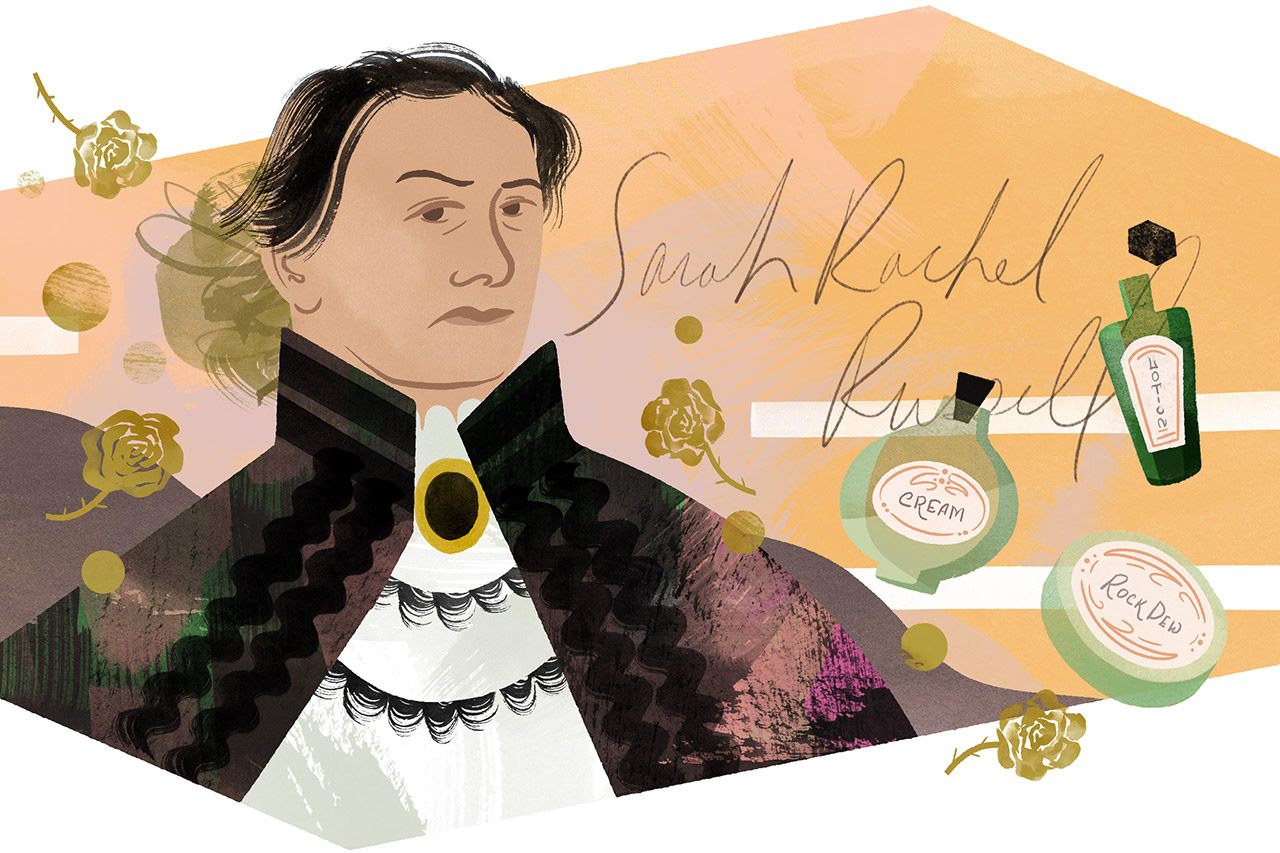The Victorian Influencer Who Peddled Poisonous Beauty Elixirs
Sarah Rachel Russell sold exotic makeup that turned out to be mostly arsenic.

Everyone loves the story of a good grift, from brilliant ruse to inevitable downfall. This week, we’re ushering in the spring of the swindle by highlighting the stories of the greatest con women in history. Previously, we heard about Liechtenstein’s Barbara Erni and her very special trunk.
In 1863, Madame Rachel opened a salon on London’s Bond Street with the words “Beautiful for Ever” emblazoned above the door. Madame Rachel peddled strange, opulent cosmetics for astronomical prices, including a $160 Magnetic Rock Dew of the Sahara for Removing Wrinkles. The item was said to offer “the appearance of increasing youth to persons of considerable antiquity” and had been “brought to Morocco on swift dromedaries,” according to a court transcript of Russell’s eventual criminal trial. (Spoiler alert!) If you find yourself wondering what a “Magnetic Rock Dew of the Sahara” could be, you’re not the only one.
Madame Rachel was born Sarah Rachel Russell sometime in the first quarter of the 19th century, according to Helen Rappaport’s Beautiful for Ever: Madame Rachel of Bond Street—Cosmetician, Con-artist and Blackmailer. She grew up on London’s overcrowded, poverty-stricken East End, where she sold rabbit skins, used clothes, and dried fish. She found a husband (he died), then another (he also died), and finally moved in with a man named Philip Levison. She continued to do odd jobs—a bit of fortune-telling here, a spot of prostitution there—until she founded her own beauty salon in London’s snobby Mayfair district. There, Russell rebranded herself as Madame Rachel and launched an ethically goopy cosmetics practice capitalizing on Victorian women’s desire for eternal youth.
In the 1860s, British women who wanted to wear makeup had to do so on the downlow. In a decree that absolutely no one asked for, Queen Victoria declared skin cosmetics to be vulgar and unladylike, fit only for the theater or the brothel, according to the BBC. The only socially acceptable way to alter your appearance was to pinch your cheeks and bite your lips and get by good genes and the ephemeral hue of your own blood. Women who longed for something more might craft their own cosmetics at home, and frequently had to rely on unsavory ingredients such as arsenic. So when Madame Rachel opened up shop, society ladies couldn’t queue up fast enough.
Unsurprising for someone peddling putative elixirs and powders from exotic locales, Madame Rachel dressed in an appropriative pastiche, according to Rappaport’s book. She wore lush robes, dripping jewels, and crystal talismans around her neck.
Inside each of her powders and creams and washes, of course, lurked a toxic cocktail of chemicals. If something had the power to burn off the skin of your face or poison your mind, Madame Rachel probably sold it. Her most-used ingredients included prussic acid, lead carbonate, and, of course, arsenic. Rachel’s trademark service, called enamelling, claimed to lighten a lady’s skin by removing all the hairs on her face and then dousing her with an alkaline wash one would normally use to clean a toilet.
Beyond her beauty scams, Rachel ran a series of other money-making schemes that didn’t sit quite right with the law. She regularly blackmailed women who couldn’t pay up front, by offering them credit and later extorting them and pawning their jewels, according to the court transcript. Inevitably, Rachel ran into the law as former clients levied numerous suits of malpractice and intimidation. Some even accused her of providing abortion-inducing drugs or running a brothel above her shop. British tabloids printed viciously offensive anti-Semitic cartoons criticizing Madame Rachel, according to Tammy Whitlock’s article, “The Madame Rachel Case, Fraud, and Retail Trade in 19th-Century England.” As Whitlock notes, she was twice prosecuted for fraud, once in 1868 and again in 1878, and eventually died in jail in 1880, leaving many of her clients to age of natural causes.







Follow us on Twitter to get the latest on the world's hidden wonders.
Like us on Facebook to get the latest on the world's hidden wonders.
Follow us on Twitter Like us on Facebook